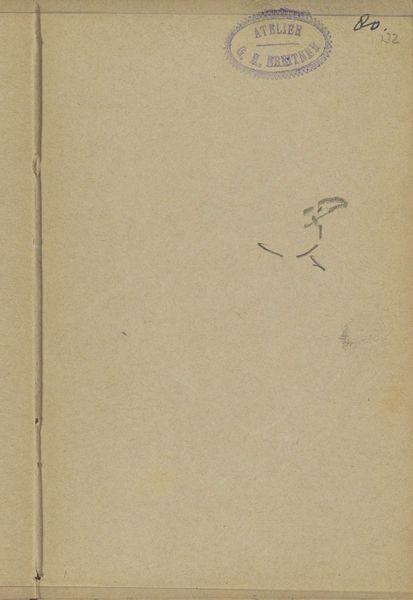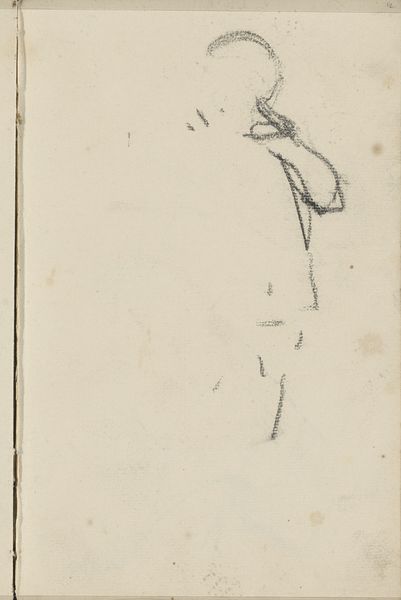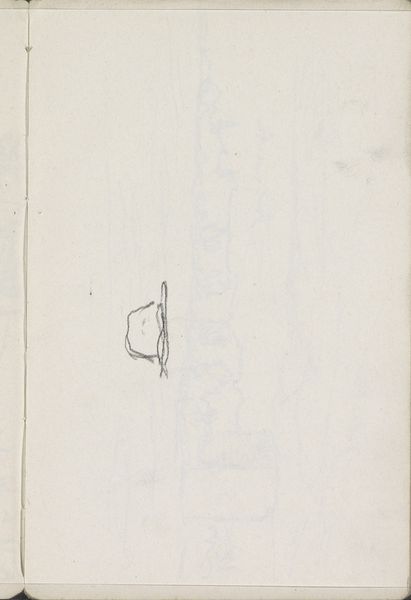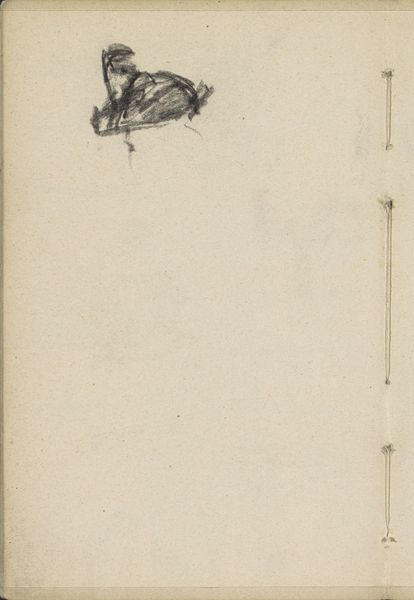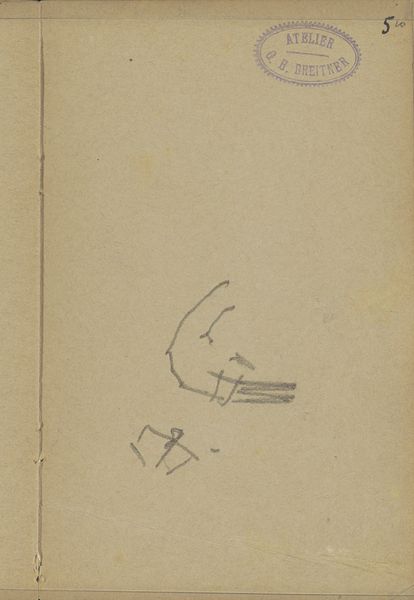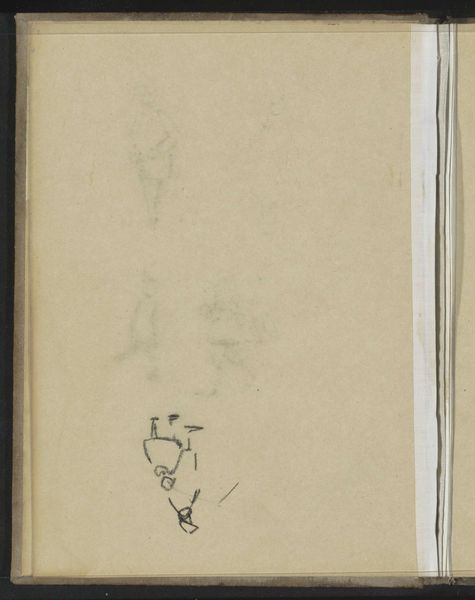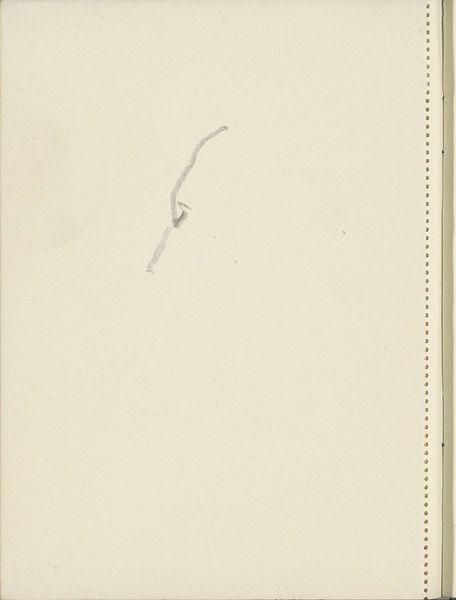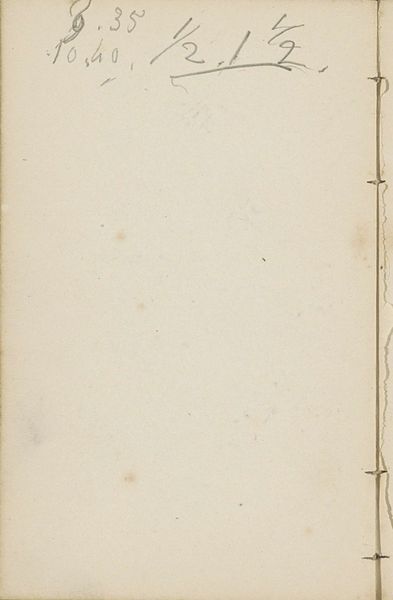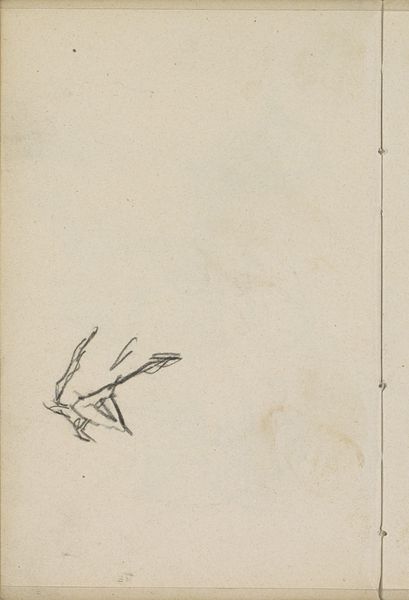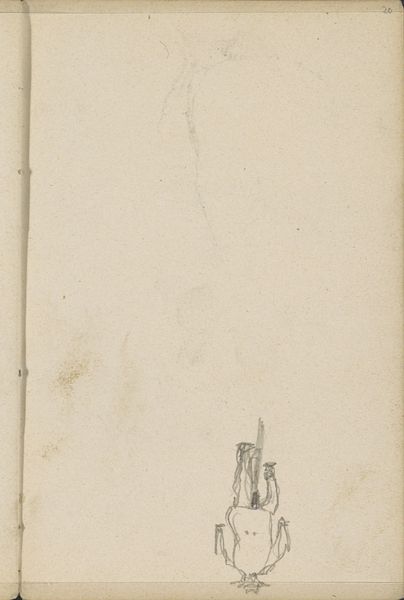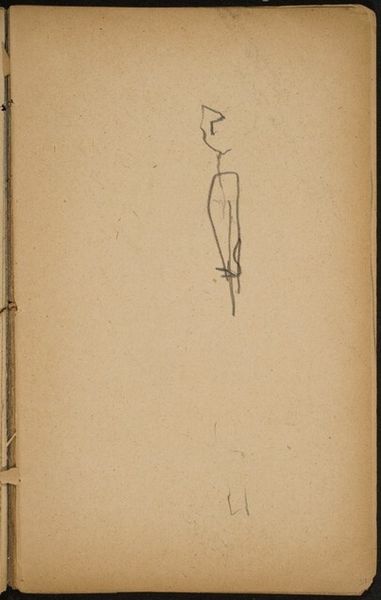
Copyright: Rijks Museum: Open Domain
Curator: What strikes me immediately about this drawing is its incompleteness; a sense of fleeting observation, almost captured on the run. Editor: That's quite true. This pencil drawing, known as "Figuurstudie", was created by George Hendrik Breitner sometime between 1902 and 1914, and is currently housed at the Rijksmuseum. It seems almost like a preliminary sketch rather than a finished work. Curator: Precisely! I’m compelled by the figure’s posture, seemingly in repose or perhaps resignation. It resonates with notions of melancholia, particularly when framed within the social constraints placed upon women of that era. Was this passivity a performance, or a true state of being? Editor: Looking at the materials themselves gives us clues. The sketchiness, the apparent haste; these indicate a specific mode of artistic production. It seems that capturing the moment, the fleeting impression, was more important than laboring over precise detail. I wonder about the paper itself, and the specific pencils Breitner used – were they readily available, common, or somehow specific to the artist's practice? Curator: I appreciate that tangible approach, how the selection of such quotidian materials democratizes the art-making process, but also, by looking closer, we see the shadow of social hierarchies within it. I cannot ignore the model herself—what might have her social status been in relationship to the artist who sketches her? What was the labor of posing for Breitner? Editor: These quick studies afforded Breitner the opportunity to hone his skills while working on more formal commissions. It makes me appreciate that every stroke is intentional in capturing the posture using so few strokes. It offers a privileged insight into an artist's practice. Curator: Yes, the composition forces us to ask so many relevant questions that shed light on art, gender, and historical narratives. I’m left contemplating the act of observation and the silent dialogue between artist and model. Editor: Agreed. Examining the process and the tools involved underscores how this apparent "quick sketch" relies on a network of labor, skill, and materiality that extends far beyond a simple aesthetic appreciation. It speaks volumes, even in its perceived incompleteness.
Comments
No comments
Be the first to comment and join the conversation on the ultimate creative platform.

